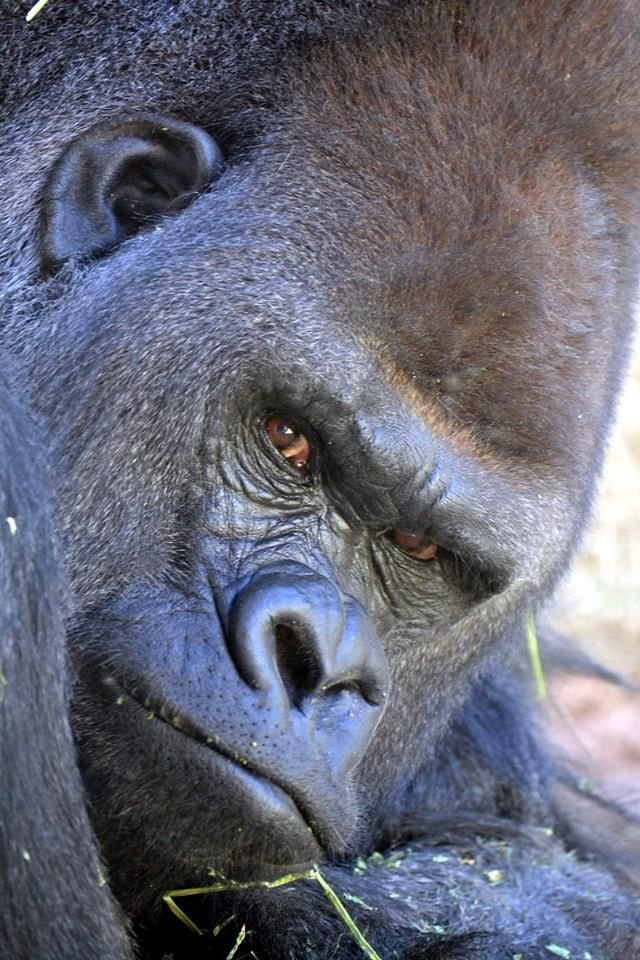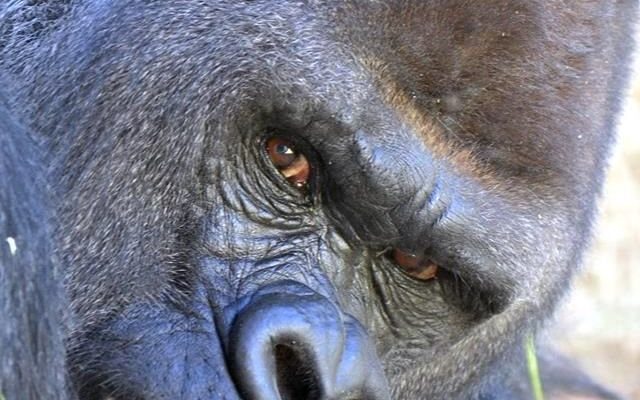
You might be wondering why it’s essential to learn about Western Gorillas. Besides their sheer size and strength, these animals face numerous threats, from habitat loss to poaching. Understanding them better is a step toward protecting their future. So, whether you’re a wildlife enthusiast or just curious, come along as we explore these fascinating facts that highlight the wonders of the Western Gorilla.
1. Their Appearance is Impressive
Western Gorillas are the largest of the four gorilla subspecies. Males can weigh between 350 to 485 pounds, and they can stand up to six feet tall when upright. Just imagine a creature that large and powerful, yet gentle and sociable. Their striking fur can range from a dark brown to a lighter gray, especially on their backs as they mature.
The silverback male carries a distinguishing characteristic—gray or silver hair on his back that becomes more pronounced as he ages. This is not just for looks; it signifies his maturity and status in the group. Females, on the other hand, are smaller, weighing about 150-250 pounds, but they are just as beautiful in their own right. Their faces are expressive, often conveying a range of emotions, from curiosity to affection.
2. They’re Social Creatures
Here’s the thing: Western Gorillas are incredibly social animals. They live in groups called troops, led by a dominant male, the silverback. This social structure is crucial for their survival. The silverback is responsible for protecting and guiding the group, which can include several females and their offspring.
Troops often consist of 5 to 30 individuals, creating a tight-knit community. They spend their days foraging for food, playing, and grooming each other—yes, grooming! This behavior strengthens their bonds and fosters cooperation within the group. Imagine a family gathering, filled with laughter and support; that’s what a day in the life of a gorilla troop feels like!
3. Their Diet is Mostly Plant-Based
You might be surprised to learn that Western Gorillas are primarily herbivores. Their diet mainly consists of leaves, stems, and fruits. They’re not picky eaters either! They enjoy a variety of plants, such as bananas, berries, and wild celery. This diverse diet helps maintain the health of their ecosystem, as their foraging habits contribute to plant growth and regeneration.
Here’s an interesting tidbit: adult gorillas can consume up to 40 pounds of vegetation daily! That’s a lot of munching. They spend around 30% of their day eating, ensuring they get all the nutrients they need. It’s kind of impressive, right?
4. They Communicate in Unique Ways
Western Gorillas have a rich vocabulary of sounds and gestures used to communicate. They can grunt, roar, or hoot, depending on what they want to express. It’s like having their own language! In fact, researchers have identified specific calls for danger, food, or distress, showing just how intelligent these creatures are.
Body language is also key in their communication. For instance, a silverback may puff up his chest to display confidence, while a female might show submission by lowering her body. Understanding these signals is crucial for their social interactions, helping maintain harmony within the troop.
5. They Are Endangered
Sadly, Western Gorillas are classified as endangered. Their population has dwindled due to habitat destruction, poaching, and diseases like Ebola. The deforestation of their homes—tropical forests in central Africa—poses a significant threat. As humans expand into these areas for agriculture and logging, gorillas lose the shelter and food sources they need.
Conservation efforts are crucial to ensure their survival. Organizations worldwide are working to protect their habitats, combat poaching, and rehabilitate injured gorillas. Every little bit counts, and raising awareness can make a difference. You can be part of the solution by supporting these initiatives and spreading the word!
6. They Share a Close Genetic Relationship with Humans
It’s fascinating to think that Western Gorillas share about 98% of their DNA with humans. This close genetic relationship highlights our connection to these magnificent beings. Studying them helps scientists understand animal behavior, evolution, and even healthcare.
Here’s a fun fact: gorillas exhibit emotions similar to ours, including joy, sadness, and empathy. Watching them care for their young or comfort one another is a reminder of our shared traits. So, the next time you see a gorilla, remember they’re not just incredible animals; they’re part of our extended family in the animal kingdom.
7. They Are Excellent Problem Solvers
Honestly, you might be surprised to learn that Western Gorillas are highly intelligent. They have shown remarkable problem-solving skills in various studies, including using tools to obtain food. For instance, some gorillas have been observed using sticks to extract termites from mounds, similar to how chimpanzees do!
This level of intelligence indicates that gorillas can adapt to their surroundings and think critically. They learn from one another, passing down knowledge and skills through observation. That’s pretty impressive, right? It reflects their capacity for learning and adapting, which is vital for their survival in changing environments.
8. They Have a Unique Sleeping Style
When night falls, Western Gorillas have a cozy way of settling down for sleep. They create nests! Using leaves and branches, they build comfortable beds in trees or on the ground. Each gorilla typically constructs their nest every evening, showcasing their resourcefulness.
These nests offer protection from predators and provide a comfortable sleep environment. Interestingly, gorillas can sleep up to 12 hours a day! This makes sense, given how much energy they expend during their active hours foraging and socializing.
9. They Have Long Lifespans
Western Gorillas have relatively long lifespans, living up to 35-40 years in the wild, and even longer in captivity. Just think about that for a moment! Their longevity allows them to forge deep bonds with their troop members and play essential roles in maintaining social structures.
In captivity, they may live until their 50s. With proper care, enrichment, and a suitable environment, they thrive, showcasing their resilience and adaptability. Their long lives further emphasize the importance of conservation efforts, as every individual contributes to the future of their species.
10. They Inspire Conservation Efforts
Last but not least, Western Gorillas play a significant role in inspiring conservation initiatives. Their plight has brought global attention to the need for wildlife protection and habitat preservation. Organizations working to protect these magnificent creatures often highlight their intelligence and social behaviors, appealing to our emotional connection to animals.
You can see their impact firsthand in conservation education programs, where people learn about the importance of protecting not just gorillas but entire ecosystems. By spreading awareness and supporting conservation efforts, we can help ensure that future generations witness the wonders of the Western Gorilla.
In conclusion, the Western Gorilla is not just another animal on the planet; it’s a vital part of our world and an extraordinary creature in its own right. By understanding these fascinating facts, we can appreciate their beauty and recognize the importance of protecting them. So, next time you think of gorillas, remember there’s so much more to them than meets the eye!

